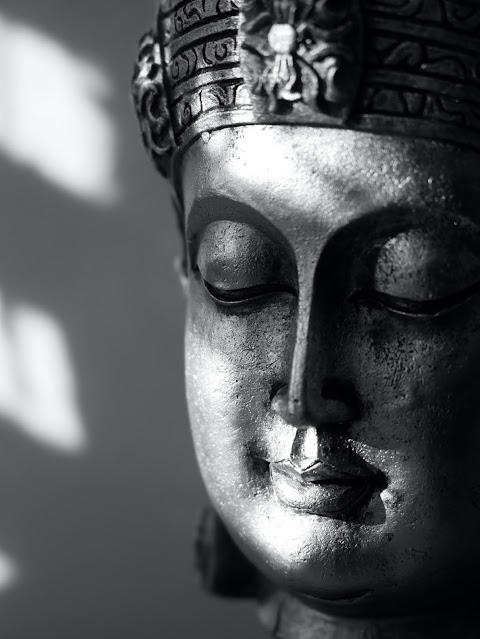*** WOR: Way-Over-Realism
Back to MFT (Micro Four Third sensor format) ... again and again! And back again with the Olympus OM-D E-M1 mark II ... again and again and again!!! After all, the OM-D E-M1 II has proven over the years how reliable as a competent photo device it can be despite the technical enhancements now present into the newest other camera models.
What is still attract me to the MFT sensor format system? Ergonomic with or without its vertical grip for sure. The silent of use with no big "clap" when you release the mechanical shutter . Its back screen that you can reverse completely without programming the EVF (Electronic Viewfinder) automatic shut off. Its spartan designed look which functionality virtues transcend over multi-gadgetry presentations. Its superb sensor monochrome rendering. Its weather resistant characteristics that fulfill its total "go-along" availability without being concerned by the possible adverse conditions. Etc., etc...
Is the Olympus OM-D E-M1 mark II THE perfect camera? Surely not and in particular for those who hate the model, or the manufacturer, or the sensor format, or the MFT system. For those ones I recommend simply to go elsewhere and be happy (or unhappy if they prefer to be). But what I have seen through the Web since a few years are these declarations of love for the OM-D E-M1 II even if we are in 2019, 2020 or 2021. That is certainly something special, something talking about the performance, the durability and the ergo-design of this model.

And what about the special secret about using Micro Four Third sensor format? Its greater deep of field!!! Yes, the supposed big disadvantage of the MFT sensor can be seen on the contrary a smarter one especially with voluminous subject (in 3D) located nearer of your taking camera. I mean what is the use to get (eye) pupil sharpness without focused eyelashes? Something I am still not understand after, let’s say, e few years into the photographic business... The MFT sensor format is great to work with if you like to be close to your subject AND get a minimal deep of field that preserve its volume details. But you can still maintain your (shallow) point of view regarding this absolutism of the absence of photographic deep of field. And you can call it "Way-Over-Realism"!
You can say that compact cameras are my way to love photography and using MFT models are my secret love to do pictures with lighter and easiest to bring the (discret) photo gear with me. And the bonus is that I am still finding their picture results pleasing and rewarding... Back to MFT (Micro Four Third sensor format) ... again and again! And back again with the Olympus OM-D E-M1 mark II model ... again and again and again!!! After all, the OM-D E-M1 II has proven over the years how reliable as a competent photo device it can be despite the technical enhancements now present into the newest other camera models.

What is still attract me to the MFT sensor format system? Ergonomic with or without its vertical grip for sure. The silent of use with no big "clap" when you release the mechanical shutter. Its back screen that you can reverse completely without programming the EVF (Electronic Viewfinder) automatic shut off. Its spartan designed look which functionality virtues transcend over multi-gadgetry presentations. Its superb sensor monochrome rendering. Its weather resistant characteristics that fulfills its total "go-along" availability without being concerned by the possible adverse conditions. Etc, etc...
And what about the special secret about using Micro Four Third sensor format? Its greater deep of field!!! Yes the supposed big disadvantage of the MFT sensor can be seen on the contrary a smarter one especially with voluminous subject (in 3D) located nearer of your taking camera. I mean what is the use to get (eye) pupil sharpness without focused eyelashes? Some thing I am still not understand after, lets say, e few years into the photographic business... The MFT sensor format is great to work with if you like to be close to your subject AND get a minimal deep of field that preserve its volume details. But you can still maintain your (shallow) point of view regarding this absolutism of the absence of photographic deep of field.
You can say that compact cameras are my way to love photography and using MFT models are my secret love to do pictures with lighter and easiest to bring the (discret) photo gear with me. And the bonus is that I am still finding their picture results pleasing and rewarding...







